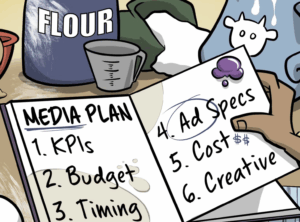 “On TV and Video” is a column exploring opportunities and challenges in programmatic TV and video.
“On TV and Video” is a column exploring opportunities and challenges in programmatic TV and video.
Today’s column is written by Jon Heller, co-founder and co-CEO at FreeWheel.
Ask five people to define programmatic and you’ll get seven different answers. Some answers make sense for display, some make sense for the premium video ecosystem and some only make sense for ad tech vendors looking for liquidity.
In its most distilled form – automation + data – programmatic helps programmers increase the worth of undervalued inventory and improve revenue predictability. It also enables agencies to reduce delivery and scarcity risk by locking in the most premium ad inventory in advance on a guaranteed basis. This is the bright side of programmatic.
Unfortunately, myriad misconceptions about programmatic TV and display legacy associations with the word are stalling the technology’s true potential. One of the most troublesome is the belief that RTB will be the primary transaction model for how linear TV is traded in the future.
As an industry we need to move away from the word and focus on the underlying value of how improved automation and safe use of data can deliver benefit to both the sell side and buy side. Just because the technology exists doesn’t mean that buyers and sellers should transact through programmatic platforms, especially if the business rules don’t align with the principles that protect the value of scarce, premium video inventory. Focusing only on short-term gains for any one party can actually destroy long-term value for all parties.
Avoiding Legacy Models
We are still in the very early stages of programmatic. The amount of premium video inventory being transacted through demand-side platforms is very limited in context of the total pie. Recognizing that allowing the wrong business models risks long-term commoditization of TV, much like what happened with display, many buyers are taking time to ensure that the business models they put in place set the right long-term precedents for the industry.
Programmatic has to start as a form that works across the majority of viewing, recognizing a mosaic of mobile, OTT and other “closed” devices from the get-go. Establishing business practices based on desktop browsers, then trying to force them onto game consoles, OTT devices and set-top boxes, is a terrible mistake.
The largest programmers will fight aggressively to ensure the business rules are right and will be proven successes, with programmers and multichannel video programming distributors increasing value of fragmented inventory through the application of data. However, there are challenges ahead.
Buyers are pushing business rules that are destructive to the TV ecosystem, and the trading desk business models are fundamentally in conflict with the business rules that make sense for scarce, premium video inventory. When you look at the situation through an operations lens, TV is actually quite operationally efficient compared to its digital brethren, but a lack of proper process, discipline and skilled resources from ad tech companies is a roadblock. Add to the mix current battles for who controls the buy – digital or TV – and you are left with chaos, which leads to fear.
Next Steps
How do we move forward? Unification of inventory is a critical first step. The only way to achieve scale is for programmers to reaggregate their fragmenting audiences. We’ll see a continued unification of inventory, regardless of screen. The transaction models under which inventory will be sold is secondary.
The transaction model shouldn’t factor whether the impression is viewed on digital or on TV, and deals need to be transacted under business rules that provide shared risk for both sides, not pushing all the risk to the seller.
Important precedents will be set by premium publishers in digital video that will bleed into TV. Principles of data control, inventory control, creative control or regulatory compliance won’t change, regardless of the screen.
Six Questions
I see six questions that publishers and marketers alike must ask themselves when considering their programmatic strategy:
- How do I unify my inventory to provide the maximum scale?
- How do I leverage data to increase value to my inventory and value to the buyer?
- How do I ensure that the business rules work ensure shared, equitable risk to protect the long-term value of the ecosystem?
- How to I ensure the right data, inventory and regulatory controls are in place for both sides?
- How to I transact on the right billable measurement metric and how do I sew this together across platforms?
- How do I execute in the most automated, efficient way possible?
Automation of steps in the buying and selling process, when properly applied, benefits all parties through lower costs, fewer errors, faster execution and an opportunity for margin improvement. Ensuring compliance as viewing extends across screens and devices is not optional – it simply must work. This creates both liquidity hurdles, as well as the need to ensure that supply sources and enabling technologies can adhere to these compliance requirements.
Failure to do so introduces risk for publishers, agencies and their marketer clients.
Follow FreeWheel (@FreeWheel) and AdExchanger (@adexchanger) on Twitter.











